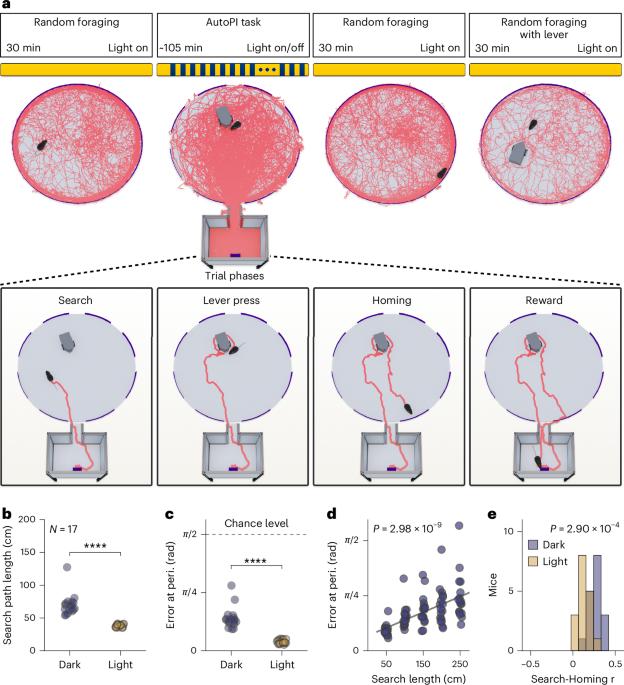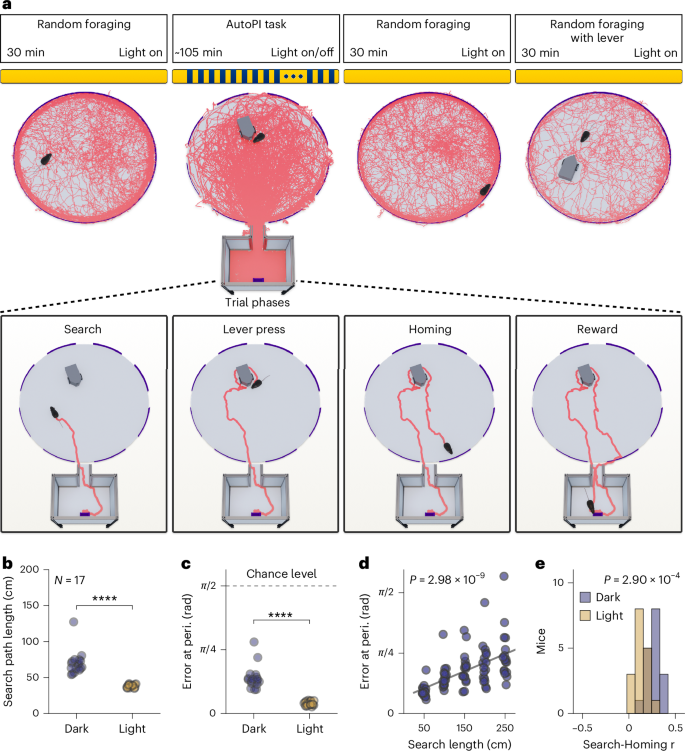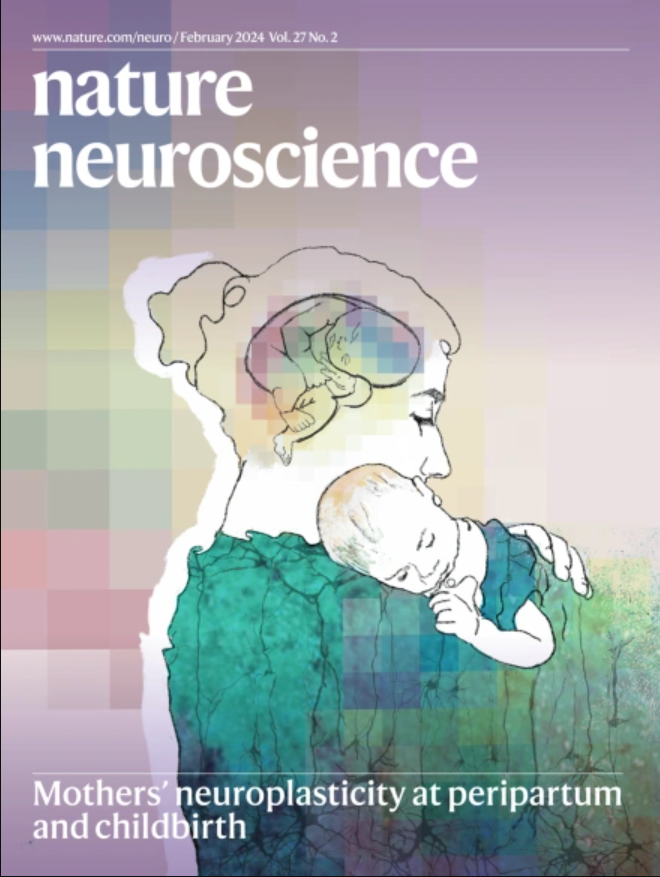网格单元在基于路径整合的导航过程中准确地跟踪运动,尽管切换参考帧
IF 20
1区 医学
Q1 NEUROSCIENCES
引用次数: 0
摘要
网格细胞具有周期性的放电场,是神经网络中进行路径整合的基本单元。人们普遍认为网格单元在一个单一的全局参考框架中编码运动。在这项研究中,通过记录小鼠执行基于自我运动的导航任务时网格细胞的活动,我们发现网格细胞在任务期间没有稳定的网格模式。相反,网格细胞在单个试验中在多个参考帧中跟踪动物的运动。具体来说,网格单元通过网格模式的转换重新锚定到与任务相关的对象上。此外,在自我运动导航过程中,网格细胞中运动方向的内部表征发生了漂移,这种漂移预测了老鼠的归巢方向。我们的研究结果表明,网格单元并不作为全球定位系统,而是在多个局部参考框架内估计位置。本文章由计算机程序翻译,如有差异,请以英文原文为准。


Grid cells accurately track movement during path integration-based navigation despite switching reference frames
Grid cells, with their periodic firing fields, are fundamental units in neural networks that perform path integration. It is widely assumed that grid cells encode movement in a single, global reference frame. In this study, by recording grid cell activity in mice performing a self-motion-based navigation task, we discovered that grid cells did not have a stable grid pattern during the task. Instead, grid cells track the animal movement in multiple reference frames within single trials. Specifically, grid cells reanchor to a task-relevant object through a translation of the grid pattern. Additionally, the internal representation of movement direction in grid cells drifted during self-motion navigation, and this drift predicted the mouse’s homing direction. Our findings reveal that grid cells do not operate as a global positioning system but rather estimate position within multiple local reference frames. Grid cells do not maintain a stable pattern during a self-motion-based task, but track animal movement in multiple local reference frames and reanchor to task-relevant objects, thus estimating local rather than global position.
求助全文
通过发布文献求助,成功后即可免费获取论文全文。
去求助
来源期刊

Nature neuroscience
医学-神经科学
CiteScore
38.60
自引率
1.20%
发文量
212
审稿时长
1 months
期刊介绍:
Nature Neuroscience, a multidisciplinary journal, publishes papers of the utmost quality and significance across all realms of neuroscience. The editors welcome contributions spanning molecular, cellular, systems, and cognitive neuroscience, along with psychophysics, computational modeling, and nervous system disorders. While no area is off-limits, studies offering fundamental insights into nervous system function receive priority.
The journal offers high visibility to both readers and authors, fostering interdisciplinary communication and accessibility to a broad audience. It maintains high standards of copy editing and production, rigorous peer review, rapid publication, and operates independently from academic societies and other vested interests.
In addition to primary research, Nature Neuroscience features news and views, reviews, editorials, commentaries, perspectives, book reviews, and correspondence, aiming to serve as the voice of the global neuroscience community.
 求助内容:
求助内容: 应助结果提醒方式:
应助结果提醒方式:


